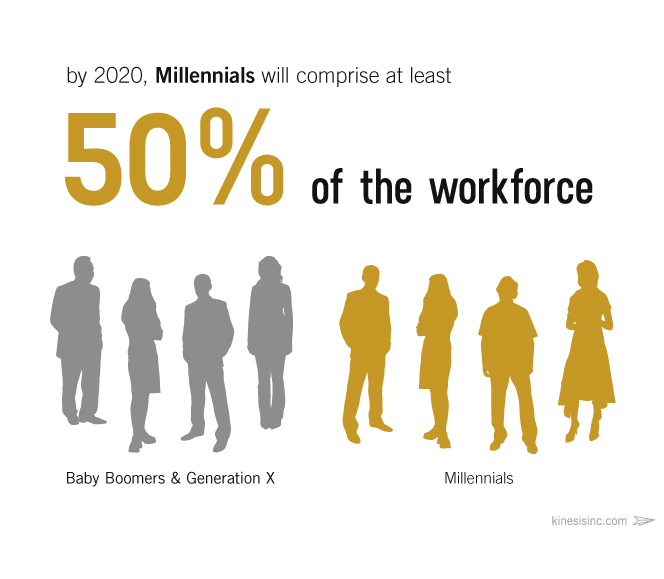
… ..
..
 …
…

… ..
..

..
…
…
…
…
…
…
…
…
..
…
…
…
..
.. …
…

…
…
…
…
…
… ..
..


… ..
..
 …
…

… ..
..

..
…
…
…
…
…
…
…
…
..
…
…
…
..
.. …
…

…
…
…
…
…
… ..
..

Many women do not receive adequate maternal health care due to the high-cost of services, which can result in financial catastrophe for uninsured, low-income families around the world. As of 2005, the World Health Organization estimated that 44 million households spent over 40% of their expendable earnings on health care, ultimately forcing 25 million families into poverty. 1 Health care financing through a subsidized voucher program is one possible solution to address this issue. However, the effectiveness of vouchers in actually reducing costs for individuals depends on the following: 1) whether service and transportation costs are subsidized, 2) the degree of service availability, and 3) community perceptions about the quality of care. Focusing on financial burden, a recent study examined the effects of a reproductive health vouchers program on out-of-pocket expenses for family planning, antenatal, delivery and postnatal care services in Kenya. 2
Over the past decade, government spending on health care in Kenya has remained consistently lower than that of neighboring countries. As a result, out-of-pocket spending is the largest source of payment for health care services. From 1996-1999, individual payments comprised 42%-48% of total health care expenditures. This financial burden is catastrophic for 5% of Kenyan households and even drives roughly 1.5 million people into poverty annually. 3
The Kenyan government implemented the reproductive health vouchers program in efforts to reduce maternal and infant deaths by increasing the rates of childbirth in health facilities and improving access to health services. Essentially, by subsidizing the cost of reproductive health care, the poor are incentivized to use those services. The program consists of three components: 1) safe motherhood (focuses on pregnancy and childbirth), 2) long-term family planning, and 3) gender-based violence recovery services. Firstly, the safe motherhood voucher covers four antenatal care visits, delivery care (e.g. Caesarean section), postnatal care within six-weeks, and treatment of neonatal complications. Secondly, the family planning voucher covers long-term prevention, such as implants, intrauterine contraceptive device (IUCD), and surgical contraception. Thirdly, is a gender-based violence recovery services voucher (available to all women). Since 2006, the program is being rolled out to various communities over time.

Photo: Global Health Photo
To examine the impact of the vouchers program, two rounds of surveys were administered to neighboring counties with similar population characteristics and available health facilities.
However, one county received vouchers while the other did not. Surveys were completed from May 2010 to July 2011 by 2,933 women aged 15-49 years, and from July to October 2012 by 3,094 women of similar ages. Statistical analyses (e.g. multivariate linear regression) were then conducted to assess the difference in out-of-pocket expenses and rates of care among voucher and non-voucher communities.
Over time, more women used the safe motherhood voucher when available. This increased from 15% to 44% by 2012. These women also used private health facilities at a much higher rate than women without vouchers. However, the use of family planning vouchers did not significantly change over time, as the number of women who paid for those services remained the same.
Women from voucher sites paid significantly less for antenatal, delivery and postnatal care services than those from non-voucher sites. While vouchers contributed to less women paying for family planning, the greatest change was related to safe motherhood services.
| Voucher Sites | Non-Voucher Sites | ||
| Family Planning | No change | 52% Increase | |
| Safe Motherhood | Antenatal Care | 20% Decline | 78% Increase |
| Delivery Care | 52% Decline | 16% Decline | |
| Postnatal Care | 90% Decline | 40% Decline | |
The findings of this study suggest that increasing the use of vouchers will result in significant cost savings for women who receive reproductive health services. Marketing campaigns and increasing the number of health facilities offering vouchers can help achieve this goal. Ultimately, providing financial assistance and access to health care can protect the most vulnerable individuals from being forced into poverty.

Photo: University of Washington, School of Public Health
A quirky playground of sights and sounds,
where the subway ends and the city meets the beach
with vibrant, tattered streets.
..
 ..
..
 ..
..
 ..
..
 ..
..
 ..
..
 ..
..
 ..
..
 ..
..
 ..
..
 ..
..
 ..
..
 ..
..
 ..
..
 …
…
 ..
..
 ..
..
 ..
..
 ..
..
 ..
..
 ..
..
 ..
..
 ..
..
 ..
..
 ..
..
 ..
..
 ..
..
 ..
..

.. ..
..
 ..
..
 ..
..
 ..
..
 ..
..
 ..
..
 ..
..

The geometry of industry from the financial district and below.
A hallowed past of success,
where lines at best
meet dreams to rest.
 …
…
 …
…
 …
…
 …
…
 …
…
 …
…
 …
…

…

…

Wilderness consumed by granite giants and ancient sequoia groves. A natural wonder sweeping the western slopes of the Sierra Nevada mountain range.

…
 …
…
 …
… …
…
 …
…
 …
…
 …
…
 …
…
 …
…
 …
…
 …
…
 …
…
 …
…
 …
…
 …
…
 …
…
 …
…
 …
…
 …
…
 …
…
 …
…
 …
…
 …
…
 …
…

..
A visual exploration of color and lines from spring in New York.

…

…

…

…

…

…

…

…

…

…

…

…

…

…

…

…

Visions from life on foot in a city that never sleeps.

…

…

…

…

…

…

…

…

…

…

…

…

…

…

…

…

…

…

…

…

…


Photo: The Chopra Center
Feeling swamped, burned out and frustrated at work? Don’t worry, you’re not alone. In this fast paced society, overworking is common and even socially acceptable. Today, job expectations involve long hours slaving over a full plate of responsibilities that only seem to move from excessive to moderately tolerable. If you’re not stressed out then you must not be working hard enough, right? Wrong. At some point, this view became acceptable as genuine dedication was replaced with corporate hustling. But at what cost?
Burned out employees are more likely to experience emotions that can negatively impact work performance and overall well-being. This includes feelings of stress, frustration, disappointment, annoyance and resentment. If left unchecked, these emotions can easily spiral into anger with disastrous consequences. When acting from a place of rage, the outcomes can be devastating.
Humor provides an outlet for better health in a stressful work environment. When demands are high, people are more likely to be on edge. For those with a low tolerance for stress, this may lead to a reduction in creativity and innovation. In the worst cases, interpersonal conflicts arise, collaborative efforts demise, and frustration and anger ensues.
There are many ways in which humor serves as an effective tool for stress reduction and anger management. On a physical level, it minimizes the effect of cortisol, which is the “fight-or-flight” hormone released during highly stressful situations. Additionally, humor relaxes the body and releases more of those “feel good” hormones. Beyond that, humor also benefits mental health by promoting community bonding, solidarity and even creativity.
Laughter can effectively defuse rage by using opposite emotional states. On one end, anger is a rigid and serious emotion that occurs when expectations are not met. In contrast, humor is a flexible emotion that requires out of the box thinking. Therefore, in order to transform anger into humor, you must remember to not take life too seriously. This can be done through visualizations or drawings. For example, if you think of a colleague as a “dirt bag”, try to imagine an actual bag of dirt sitting on a desk, attending meetings and making calls. While it may appear “silly”, using humor in this manner can help to reduce tension and allow you to later address problems more constructively.
When events are taken lightly, humor has the opportunity to seep into the lives of even the most stressed out individuals. For example, in a 2017 study presented in the Journal of Managerial Psychology, researchers found that business executives, lawyers and doctors admitted to swearing in the workplace. While profanity is generally unacceptable in this environment, positive outcomes were still reported at the individual, interpersonal and group levels. As a result of not taking swearing too seriously, professionals and their colleagues were able to react to profanity with humor rather than anger. Numerous positive results were reported, including stress-relief, as well as enriched communication and social interactions. Overall, this study illustrates the benefits of experiencing life from a lighter and more humorous state of being. While I am not condoning profanity at work, I am endorsing life with more laughter.
… ….. 

Photo: Times Jobs
By 2030, millennials or Gen Y will account for 75% of the global workforce. (1,2) Engaging this young and technologically savvy group requires innovative tactics. What worked for past generations may not necessarily produce the same outcomes for Gen Y. Currently, 72% of U.S. employees are disengaged or actively disengaged. The high cost of employee turnover is estimated at 1.5 to 3 times an employee’s salary. This is due to the cost of recruitment, loss of institutional knowledge, training new hires, loss of member relationships and impact on morale. Therefore, it is vital that employers understand generational differences in order to implement effective interventions that foster employee commitment and retention. While the media has often painted Gen Y unfavorably—entitled and self-absorbed—the truth behind the millennial mindset is likely more complex. With increased attention, researchers are now examining the motivations of Gen Y for the purposes of cultivating corporate environments for the modern age.
Table 1. Definitions of Generations
| Name | Span of Birth Years |
| Baby Boomers | 1944-1964 |
| Gen X | 1965-1980 |
| Millennials (Gen Y) | 1981-1995 |
In a 2016 study by Indiana University, 1,798 retail workers were surveyed in order to examine generational mindsets and whether a positive work environment was associated with employee loyalty. (1) Researchers found that when compared to Gen X or Baby Boomers, millennials had drastically different perceptions of work, especially in regards to the concepts of duty, drive and reward. Additionally, millennials did not conceptually link organizational commitment with workplace culture. Therefore, having a positive workplace environment is not enough for millennials to stay committed to a particular company. Instead, they seek organizations that meet their needs for contribution and fulfillment.
Based on the findings in this study, numerous strategies are recommended to engage millennials in a manner that minimizes stress. For example, managers could adjust their performance appraisal process by showing millennials how their work positively supports organizational objectives and goals. Doing so cultivates a greater sense of meaning and commitment to the team. It also addresses three traits that researchers have found to be prominent in the millennial mindset: teamwork, communication with superiors, and frequent feedback. Reframing concepts of duty, drive and reward can ultimately facilitate a more productive environment, with a workforce that is committed, passionate and loyal. By embracing differences and acting with empathy, corporate leaders are shaping workplace environments that foster employee well-being.
Show how individual work connects to the larger team goals.
Frame failure as a positive learning experience that encourages alternative actions.
Position work requests in terms of the larger organizational context.
Promote frequent interaction with superiors through a performance evaluation plan that increases organizational communication.
Frequently assess activities and provide tangible evidence of appreciation.

Photo: Metro Fax
REFERENCES

…

…

…

…

…

…

…

…

…

…

…

…

…

…

…


…

…

…

…

…

…

…

…

…

…

…

…

…


…

…

…

…


…
